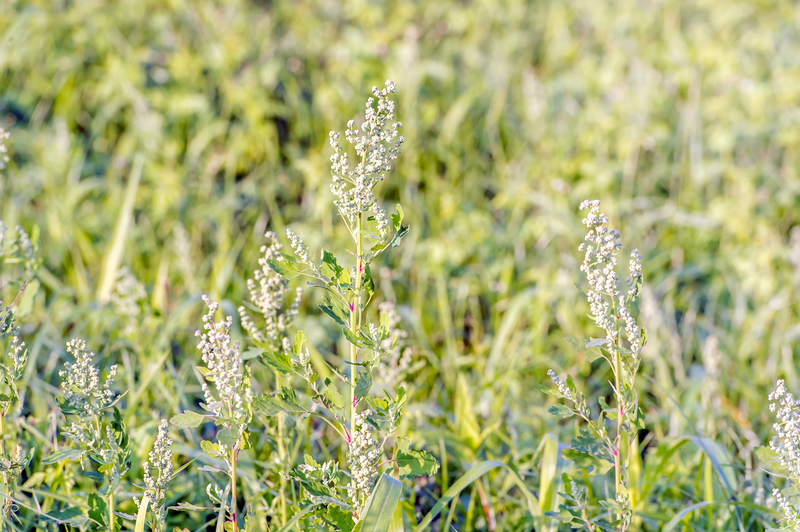Top Ways to Prepare Your Lawn for Hot, Dry Summer Months
As summer approaches and temperatures begin to soar, homeowners face the annual challenge of keeping their lawns healthy, green, and resilient against the stresses of heat and drought. While maintaining a lush lawn during hot, dry weather can be daunting, a little preparation and strategic maintenance can make a significant difference. In this comprehensive guide, we will explore the top ways to prepare your lawn for hot, dry summer months using proven, environmentally friendly techniques. By following these tips, you can keep your lawn vibrant and beautiful all season long.
Understanding the Impact of Summer Heat on Your Lawn
Before diving into practical tips, it's important to understand how summer weather stresses your lawn. High temperatures, intense sunlight, and low rainfall combine to dry out the soil and limit water availability. Grass roots may shrink deeper into the earth in search of moisture, while weeds and diseases can take advantage of weakened turf. By proactively preparing your lawn, you can minimize these issues and ensure healthier growth. Whether you're dealing with Kentucky bluegrass, bermuda grass, or other common turf varieties, the following methods are essential for summer lawn care.

1. Choose the Right Grass Variety for Summer Resilience
One of the most effective methods for preparing lawns for hot spells is to plant or overseed with drought-tolerant grass varieties. Cool-season grasses may struggle during hot, dry conditions, while warm-season grasses like Bermuda, Zoysia, and Buffalo grass are naturally more resilient.
Top Drought-Tolerant Grasses
- Bermuda Grass: Thrives in heat and recovers quickly from drought stress.
- Zoysia Grass: Known for its thick turf and tolerance to both heat and drought.
- Buffalo Grass: A low-water turf option that remains green even during prolonged dry spells.
- Tall Fescue: While cool-season, it has deep roots, making it more drought resistant than many alternatives.
If you're not ready to swap out your entire lawn, overseeding with a drought-resistant blend can increase your lawn's hardiness heading into the summer months.
2. Optimize Your Lawn's Watering Schedule
Proper irrigation is crucial for preparing your grass for hot, dry weather. Rather than frequent shallow watering, adopt a deep, infrequent watering routine. This encourages grass roots to grow deeper, improving drought tolerance.
Best Practices for Summer Lawn Watering
- Water Early in the Morning: Prevent water loss from evaporation and fungal diseases.
- Water Deeply, Not Frequently: Apply approximately 1 inch of water per week in one or two sessions.
- Avoid Watering at Night: It can encourage mold and disease.
- Invest in Smart Irrigation Systems: Use timers, soil moisture sensors, and drip irrigation to optimize water use.
Always observe local watering restrictions and guidelines to conserve water and comply with community rules.
3. Adjust Mowing Height to Protect Your Lawn
Mowing is much more than an aesthetic necessity. The height at which you mow can determine your lawn's ability to survive the summer heat. Raise your mower blades by half an inch to an inch during the hottest months. Longer grass shades the soil, reduces evaporation, and helps roots retain moisture.
Additional Mowing Tips
- Never cut more than 1/3 of the grass blade at once to prevent stress.
- Keep mower blades sharp to avoid tearing and damaging the grass.
- Leave grass clippings on the lawn: They act as natural mulch, protecting against moisture loss and providing nutrients.
*Maintaining an optimal mowing routine is a key part of hot weather lawn preparation.*
4. Aerate Your Lawn for Better Water Absorption
Soil compaction is a common yet overlooked issue, especially in lawns that experience frequent foot traffic. Aerating your lawn--removing small plugs of soil--allows air, water, and nutrients to penetrate deeper, improving root development and drought resilience.
When and How to Aerate
- Aerate in late spring for warm-season grasses, or early spring for cool-season varieties.
- Use a core aerator, which removes plugs rather than just poking holes.
- Follow up aeration with overseeding and fertilizing for maximum effect.
Aeration is especially beneficial in clay soils or lawns with significant foot traffic.
5. Feed Your Lawn with the Right Nutrients
Summer lawn survival depends on strong roots and healthy top growth. Fertilizing appropriately in late spring or early summer provides your grass with the nutrients it needs to withstand hot, dry conditions.
Summer Lawn Fertilization Tips
- Use a slow-release, high-potassium fertilizer to support root growth and drought resistance.
- Avoid applying too much nitrogen; it can burn your lawn during high heat.
- Consider organic fertilizers, which release nutrients more gradually and sustain soil health.
A soil test can help you determine exactly which nutrients your lawn needs prior to the hottest months.
6. Mulch and Topdress to Improve Soil Moisture Retention
Mulching and topdressing can be game-changers for holding moisture and supporting soil health. Topdressing with compost adds organic matter, improving soil structure and water retention. Mulching around garden beds and tree bases prevents excessive evaporation.
How to Topdress Effectively
- Spread a thin, even layer of quality compost over the lawn after aeration.
- Rake lightly to work the compost into the turf and soil.
- Water thoroughly to help the compost settle in.
Regular mulching not only supports better summer resilience but also enhances your lawn's long-term health.
7. Control Weeds and Pests before the Heat Hits
Weeds and pests can exacerbate stress on your lawn during hot months by competing for precious water and nutrients. Take preemptive action in late spring to reduce their impact.
Pre-Summer Weed and Pest Management Tips
- Apply pre-emergent herbicides to prevent weeds from sprouting during summer.
- Hand-pull or spot-treat existing weeds before temperatures rise.
- Monitor for signs of common lawn pests (like grubs or chinch bugs) and treat promptly with targeted, environmentally-safe products.
*Consistent management not only prepares your lawn for hot weather but also supports its health across all seasons.*
8. Encourage Deep Root Growth for Drought Resistance
The depth and vigor of your lawn's roots are crucial for summer drought tolerance. The above techniques--proper watering, aeration, fertilization, and mowing--work together to promote stronger root systems.
- Gradually reduce watering frequency in spring to teach roots to go deeper.
- Avoid heavy foot traffic in mid-summer to limit stress and root compaction.
- Resist the urge to overwater, as it can lead to shallow, weak roots.
By focusing on root health, you're giving your lawn a better chance to access deeper soil moisture--even when surface layers dry out.
9. Shade and Protect Vulnerable Areas
Some sections of your yard may be more prone to heat damage due to direct sun exposure or shallow soil. Temporary shade solutions such as shade cloths, temporary fences, or even potted plants can help minimize stress during the hottest periods.
- Install windbreaks to reduce evaporation in exposed areas.
- Add mulch or extra compost to thin or sun-baked spots.
- Reseed or reinforce with hardy grass types in high-stress zones.
Creative solutions can help your entire lawn withstand the effects of a dry, hot summer.
10. Practice Sustainable Lawn Care for Long-Term Health
Sustainable lawn care isn't just about overcoming the challenges of a single season. It involves creating a resilient ecosystem that supports healthy turf, diverse soil biology, and efficient resource use. Emphasize organic practices, minimize chemical dependence, and use smart technology to reduce your environmental impact.
- Consider integrating clover or other groundcovers for natural drought resistance.
- Collect rainwater or use graywater systems to augment irrigation during dry spells.
- Regularly update your maintenance plan based on changing weather patterns and lawn performance.
*Long-term resilience begins with small, smart choices made each season.*

Frequently Asked Questions About Summer Lawn Preparation
How often should I water my lawn during hot, dry weather?
Aim for one to two deep watering sessions per week, delivering about 1 inch of water each time. Adjust based on rainfall, soil type, and grass species.
Is it okay to fertilize my lawn during a drought?
Avoid fertilizing during peak drought or extreme heat, as it can burn the grass. Opt for slow-release or organic fertilizers applied in spring or fall.
What is the ideal mowing height for summer lawns?
Raise the mowing height by up to one inch during summer. Most grasses benefit from being kept at 3-4 inches tall for optimal protection and photosynthesis.
Can I prevent heat damage to newly seeded areas?
Yes! Keep them consistently moist with gentle, regular watering, and consider using shade covers during intense heat spells.
Conclusion: Give Your Lawn the Best Chance This Summer
Preparing your lawn for the hot, dry summer months doesn't need to be overwhelming or wasteful. By planning ahead and using the techniques outlined above--from selecting drought-resistant grass species and smart watering routines to aeration, fertilization, and sustainable practices--your lawn will not only survive but thrive when the heat arrives. Remember: continuous, gentle care is key to building long-term lawn health and beauty.
Don't wait until you see signs of stress; take action now to ensure your lawn stays green, resilient, and beautiful all summer long!
- Choose the right grass variety.
- Water deeply and wisely.
- Adjust mowing practices.
- Aerate and fertilize strategically.
- Mulch, topdress, and manage pests organically.
- Embrace sustainable lawn care for lasting impact.
For more tips and ongoing guidance, consult your local extension service or a professional lawn care expert. With preparation, patience, and persistence, you can enjoy a vibrant, resilient lawn--even in the toughest summer weather.